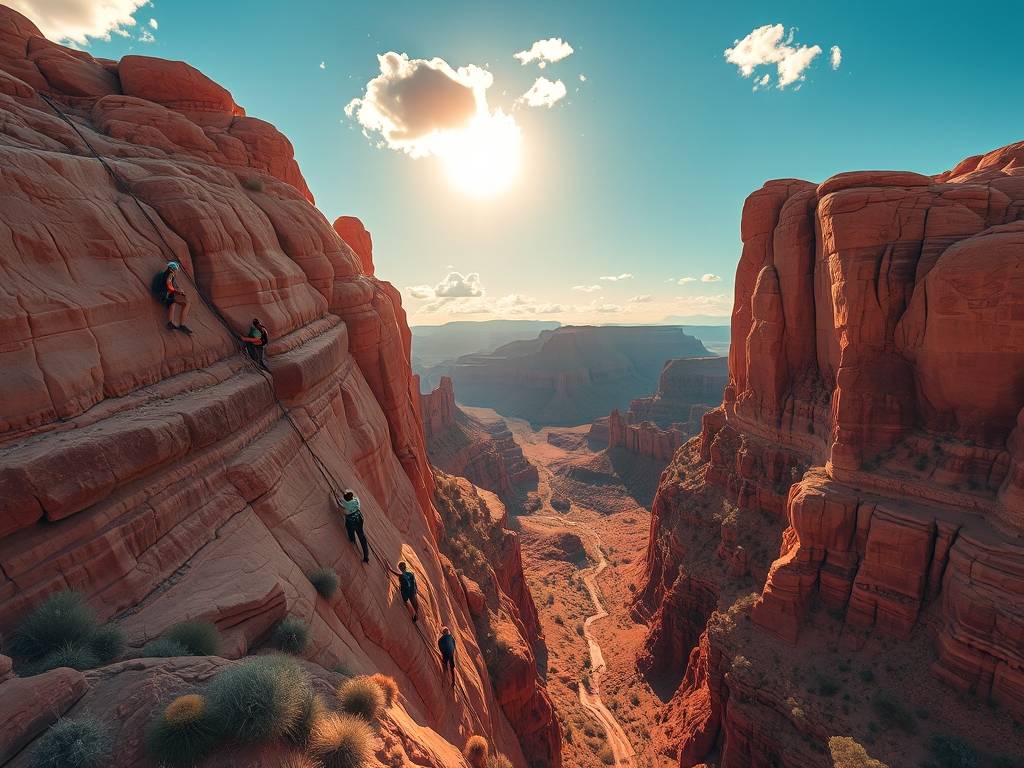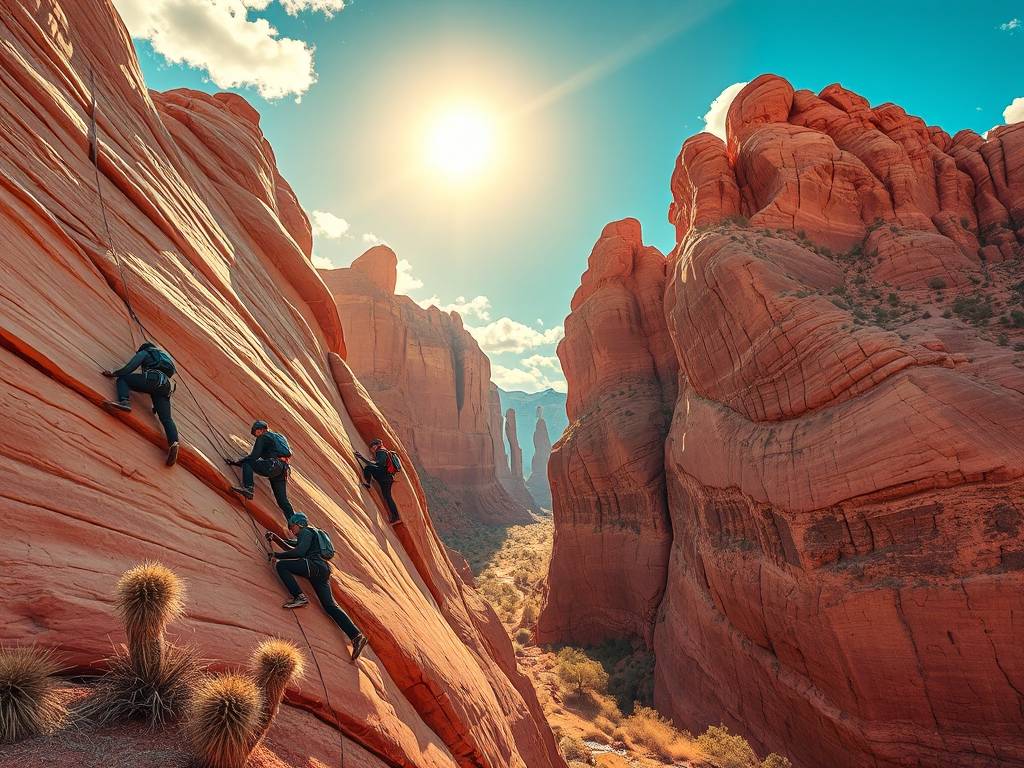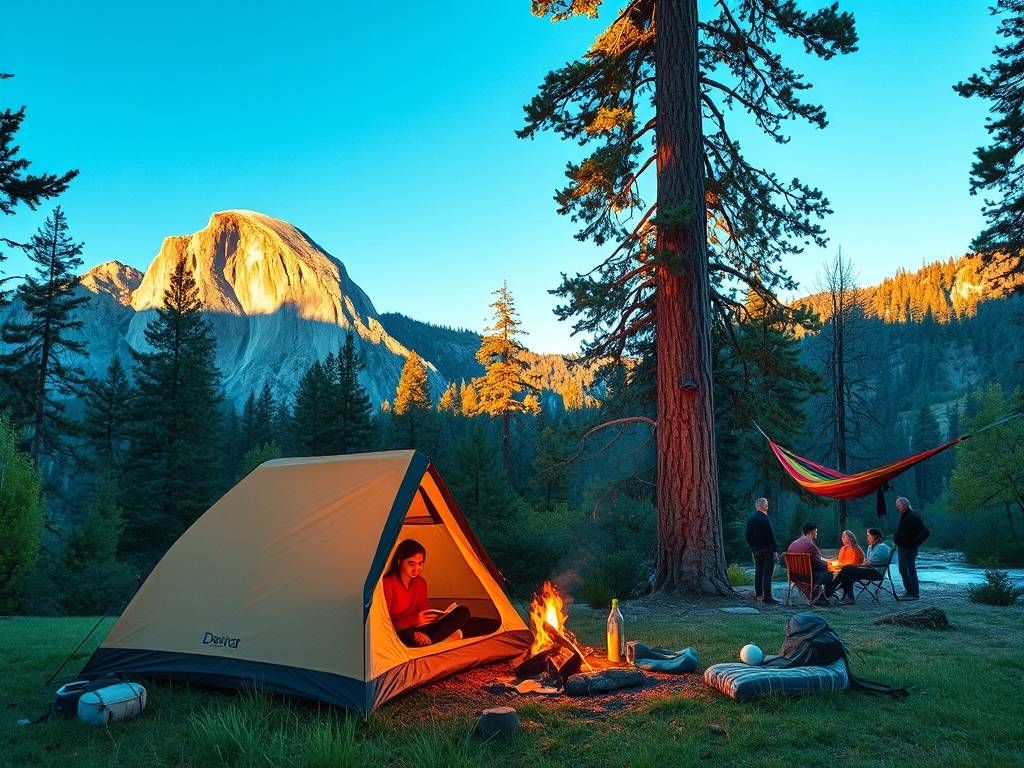USA Travel
US Travel: Rock Climbing in Utah’s Moab Desert
From Red Rock to Starry Skies: Your Ultimate Rock Climbing Adventure in Moab's Desert Playground
Tucked away in the high desert of southeastern Utah, the town of Moab isn’t just a destination; it’s a feeling. It’s the crunch of gravel under your hiking boots, the sight of a crimson sun setting behind a sandstone spire, and the unique, satisfying ache in your forearms after a day spent defying gravity. For rock climbers, Moab is a pilgrimage. It’s a vast, open-air gym sculpted by time, where the cracks are perfect, the faces are steep, and the views stretch forever. Whether you’re a seasoned trad climber or someone who’s just mastered the figure-eight knot, the question isn’t if you should climb here, but how to do it right.
This guide is your comprehensive companion, designed to take you from dreaming about your Moab rock climbing trip to confidently planning every pitch. We’ll solve all your puzzles, from choosing the right season to understanding the unique ethics of desert rock.

The Lay of the Land: Moab's Iconic Climbing Areas
First things first: where do you actually climb? Moab’s climbing is famously spread out, primarily divided between two world-class venues: Indian Creek and the larger Moab area, which includes everything else.
Indian Creek: About an hour south of Moab, Indian Creek is less a crag and more a state of mind. This is the global Mecca for crack climbing. Forget face climbs with a scatter of bolts; here, it’s all about pure, parallel-sided splitters that run for hundreds of feet up towering sandstone walls. The experience is meditative and brutally physical. You don’t just “climb” at the Creek; you learn the art of jamming. Essential gear includes a massive rack of cams, with multiples of the same size (especially #1, #2, and #3 Camalots). If you’re new to desert crack climbing techniques, expect a humbling and immensely rewarding experience. Popular areas like the Supercrack Buttress offer a concentration of classic routes, but be prepared for company—the word is out on this paradise.
The Moab Area (Proper): This is where you’ll find the variety that makes Moab so special.
- Wall Street: Perhaps the most famous climbing spot in Moab, located right off the Colorado River on the road to the Potash plant. This is the place for beginner-friendly rock climbing in Moab. The routes are mostly single-pitch, many are bolted, and the accessibility is unmatched. You can literally park your car and be at the base of a climb in minutes. It’s a fantastic place for a first day to acclimate to the desert sandstone.
- Potash Road Bouldering: The boulders scattered along Potash Road offer a fantastic Moab bouldering guide right from your car window. With a crash pad and a spirit of exploration, you can find dozens of problems ranging from V0 to V-hard. The setting, with the river on one side and towering cliffs on the other, is unbeatable.
- The Ice Cream Parlor & Big Bend: These areas offer a mix of trad and sport routes on featured Wingate sandstone. They provide a great stepping stone between the friendly bolted routes of Wall Street and the full-on trad adventures elsewhere.
When to Go: Timing Your Desert Climbing Pilgrimage
The desert is a place of extremes, and timing is everything for a safe and enjoyable Moab desert climbing adventure.
Spring (March-May) & Fall (September-October): This is prime time. The days are long, the sun is warm but not scorching, and the temperatures are perfect for sending your project. Camping is comfortable, and the entire desert ecosystem is at its best. This is also the busiest season, so plan accordingly.
Summer (June-August): Climbing in the Moab summer is a serious undertaking. Temperatures regularly soar above 100°F (38°C). If you must climb, your day starts before sunrise and ends by 10 a.m. The rest of the day is for napping in the shade, swimming in the river, or enjoying air-conditioning. Hydration isn’t a suggestion; it’s a matter of safety.

Winter (November-February): Don’t overlook winter! While cold snaps can bring snow, there are many perfect, crisp, sunny days with excellent friction. Indian Creek can be climbable in a t-shirt on a sunny winter afternoon. You’ll have the crags largely to yourself, but be prepared for short days and cold nights.
Gearing Up: What You Need for Moab's Unique Rock
Moab’s sandstone is beautiful but fragile. Your preparation goes beyond the standard rack.
- Tape is Not Optional: For crack climbing in Indian Creek, your hands will thank you for a solid taping job. Bring a lot of athletic tape—you’ll go through it faster than you think.
- A Big Rack: As mentioned, Indian Creek demands a specialized rack. For most classic splits, you’ll want at least two, often three or four, of the same cam size. Local gear shops in Moab offer gear rentals, which is a fantastic solution for travelers.
- Sturdy Approach Shoes: The approaches in the desert are often not trails but scrambles over slickrock and through sandy washes. A good pair of approach shoes is worth its weight in gold.
- The Desert Climbing Kit: Beyond climbing gear, your kit must include: a headlamp (desert nights are pitch black), a wind jacket (weather can change rapidly), a wide-brimmed hat, sunscreen, and more water than you think you could possibly drink. A rule of thumb is one gallon (4 liters) per person, per day.
Climbing with Care: The Ethics of Desert Rock
The red rock of Moab is soft. It erodes easily, and the desert ecosystem is incredibly fragile. “Leave No Trace” isn’t just a slogan here; it’s a sacred pact.
- Respect the Rock: Avoid climbing for at least 24-48 hours after a rain. Wet sandstone is extremely weak and can break apart, causing permanent damage.
- Chalk Use: Consider using colored chalk, which is less visually intrusive on the beautiful red and orange walls. Brush your tick marks off when you’re done.
- Desert Soil Crust: That black, knobby soil you see is alive. It’s a living cryptobiotic crust made of fungi, moss, and bacteria that prevents erosion. STAY ON ESTABLISHED TRAILS and never walk on this crust. A footprint can destroy decades of growth.
- Anchor Building: Be proficient in building and cleaning traditional anchors. Many Moab climbs, even some with bolts on the route, require trad gear at the anchor.
Beyond the Crag: The Complete Moab Experience
A trip to Moab is more than just climbing. To only climb would be to miss half the magic.
- Rest Days are Essential: Your skin and muscles will need a break. Luckily, Moab is an adventure hub. Rent a mountain bike and tackle the legendary Slickrock Trail, go for a scenic hike in Arches National Park (remember, reservations are often required!), or take a guided 4x4 tour through Hell's Revenge. A float trip down the Colorado River is a perfect way to rest your arms while still soaking in the epic scenery.
- Stargazing: With minimal light pollution, the night skies in Moab are a dazzling spectacle. Laying on a warm slickrock slab and staring up at the Milky Way is the perfect end to any climbing day.
- Fueling Up: After a long day, refuel at one of Moab’s many excellent eateries, from food trucks to hearty sit-down restaurants. And don’t forget to stop by the local gear shops—they are fountains of beta and community.
Your ultimate rock climbing guide to Utah's desert ends with this final piece of beta: come prepared, climb with respect, and open yourself to the raw, untamed beauty of this place. Moab has a way of getting under your skin, its red dust a permanent souvenir. It’s a challenge, a playground, and a sanctuary all at once. So pack your rack, tape your hands, and get ready for an adventure that will redefine your idea of what climbing can be. The desert is waiting.
相关文章
- US Travel: US Road Trip Accommodation Booking Tips
- US Travel: Hiking the Appalachian Trail in Vermont
- US Travel: White-Water Rafting in Colorado’s Arkansas River
- US Travel: Bird-Watching in Florida’s Everglades
- US Travel: Camping in California’s Yosemite National Park
- US Travel: Stand-Up Paddleboarding in Hawaii’s Oahu Coast
- US Travel: Fishing in Alaska’s Kenai River
- US Travel: Biking the Pacific Coast Highway in Oregon
- US Travel: Horseback Riding in Montana’s Yellowstone Vicinity
- US Travel: Stargazing in New Mexico’s White Sands National Park
发表评论
评论列表
- 这篇文章还没有收到评论,赶紧来抢沙发吧~


